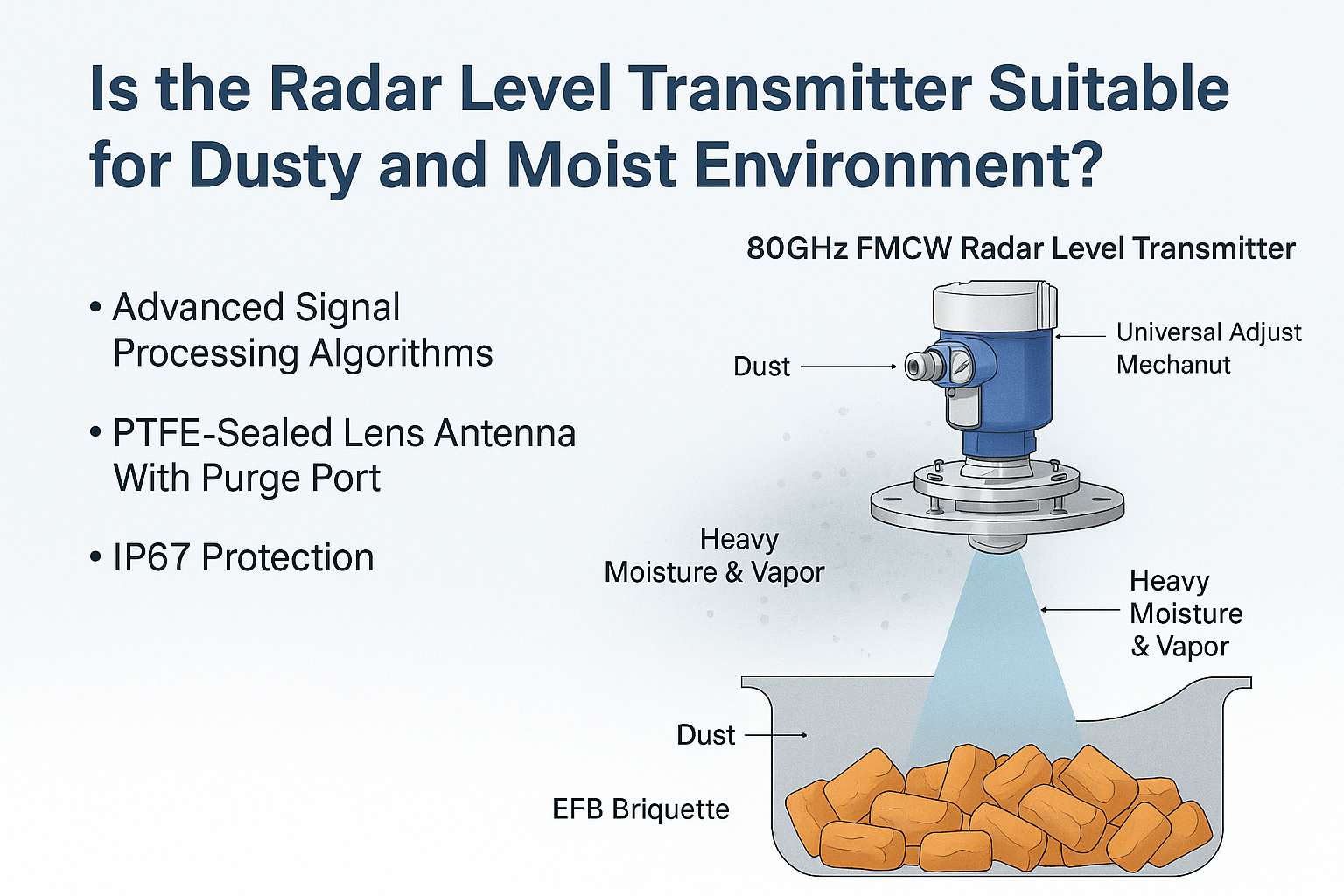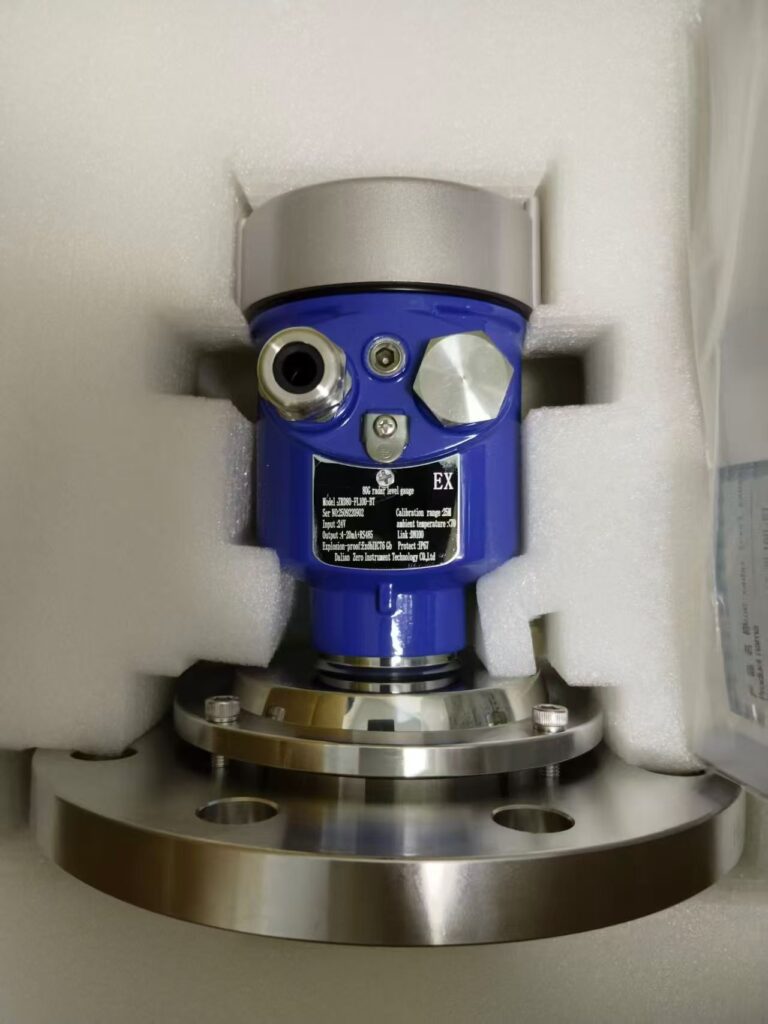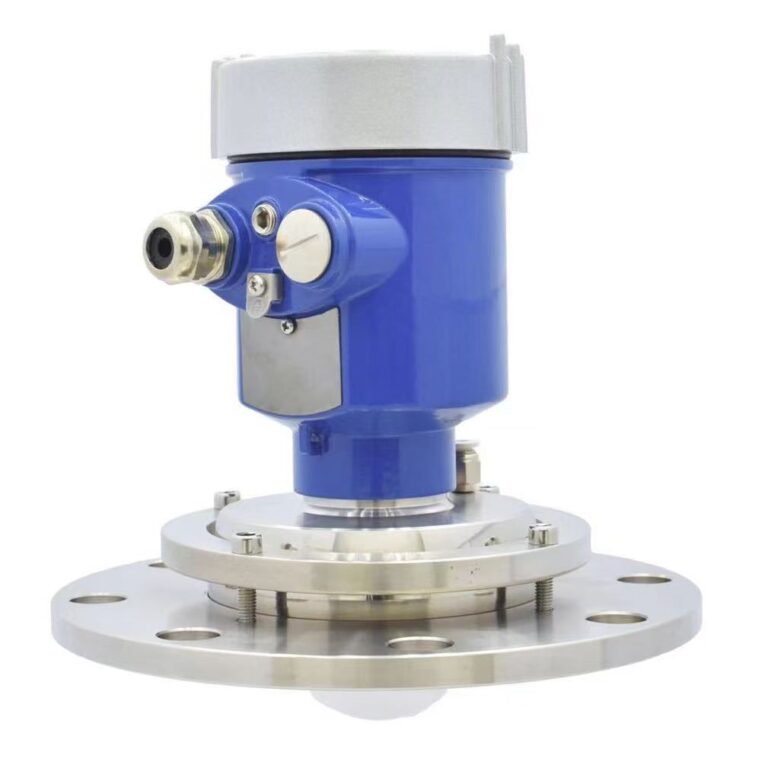1. Working Principle and Structure of Radar Level Meters
A radar level meter consists of several key components: a transmitter and receiver, signal processing unit, antenna, and display system. The operating principle involves the emission, reflection, and reception of electromagnetic waves. The antenna sends out radar waves, which are reflected by the surface of the liquid or object. The time taken for the waves to travel from transmission to reception is proportional to the distance from the antenna to the liquid level. Given that the speed of electromagnetic waves is constant, the liquid level can be determined accurately based on this time difference.

2. Common Radar Level Meter Faults and Troubleshooting
Although radar level meters are generally reliable, faults may occur due to harsh operating environments. It is important to inspect the equipment regularly, and corrective measures such as improving installation conditions can significantly reduce the likelihood of faults. Below are common faults and their solutions:
(1) Fixed Display Despite Level Changes
Fault: The radar level meter displays a constant reading, even when the liquid level is changing.
Causes and Solutions:
Contaminated Antenna: If debris or dirt accumulates on the antenna, it can cause interference and strong reflections, resulting in a false fixed reading. Cleaning the antenna and surrounding areas will typically resolve the issue.
Obstacles in the Tank: Objects inside the tank can reflect waves, leading to a strong return signal. In such cases, using software to suppress or filter false signals and adjusting the radar’s installation position can help eliminate this problem. Repositioning the radar or clearing obstacles can prevent future issues.

(2) Display Shows a Fixed Deviation
Fault: The radar level meter shows a constant deviation in the liquid level.
Causes and Solutions:
Incorrect Tank Height: Ensure the radar meter’s zero point matches the tank’s reference zero point. Additionally, verify that the measurement range on the display matches the actual range of the tank. If necessary, reset the radar meter to ensure accurate readings.
Condensation or Dirt on Antenna: If there is condensation or dirt on the antenna, it can distort the readings. Clean the antenna and perform a wave search to resolve the issue.
(3) Fluctuating Display
Fault: The liquid level is stable, but the radar meter display fluctuates.
Causes and Solutions:
Installation Location: If the radar meter is installed above an inlet or agitator, turbulence can cause the liquid surface to move, leading to fluctuating readings. In this case, adjusting the damping time or increasing the radar meter’s time constant can stabilize the reading.
Condensation on Antenna: If condensation forms on the antenna, it can interfere with the radar waves. Power cycling or cleaning the antenna may help resolve this issue. Additionally, checking the wiring for poor connections or electromagnetic interference may also solve the problem.

(4) Maximum Level Display
Fault: The display shows the maximum value even when the liquid level is normal.
Causes and Solutions:
Water Droplets or Dirt on the Antenna: If water or dirt accumulates on the antenna, it can obstruct the radar waves. Cleaning the antenna and the isolation window beneath it with soft cloth and appropriate solvents, such as alcohol, usually restores normal function.
Improper Installation: If the radar meter’s antenna does not extend properly from the housing or if the housing diameter is too small, it can lead to false reflections. Reinstalling the radar meter with proper fittings or using a larger housing may prevent this issue.
(5) Minimum Level Display
Fault: The radar meter shows a non-zero reading when the tank is empty.
Causes and Solutions:
Signal Loss at Low Levels: When the tank is empty, the radar may lose the surface echo and trigger a “lost signal” warning. In such cases, use the radar meter’s empty-tank processing function to handle the missing signal and set the minimum level to zero.

3. Additional Maintenance Tips
Regular Cleaning: To prevent frequent issues with the antenna, it’s essential to clean it regularly, especially in environments prone to condensation or dirt buildup.
Installation Position: Proper installation is key to minimizing interference and ensuring accurate readings. Avoid placing the radar meter in positions where turbulence or fixed objects can obstruct the signal.
